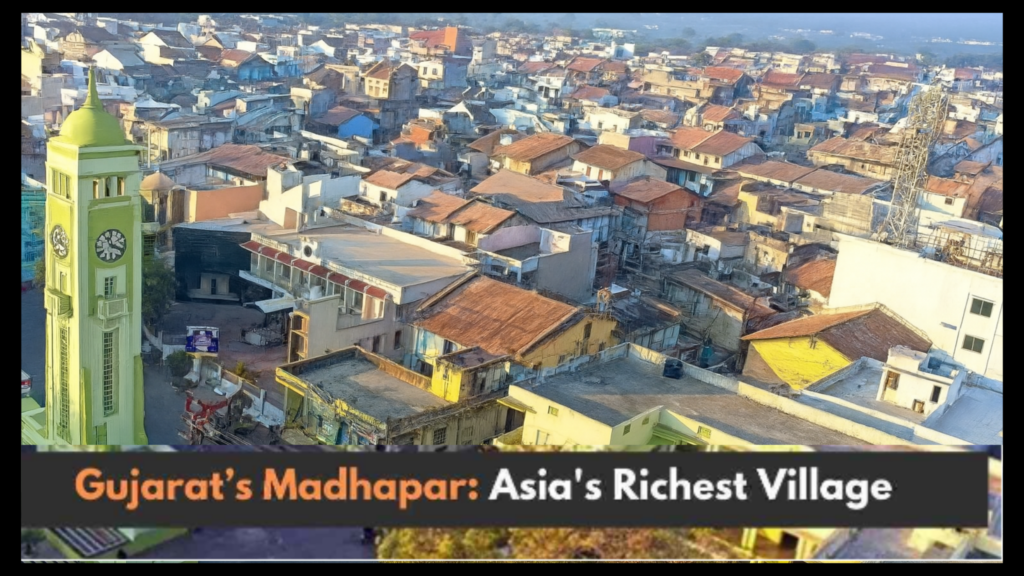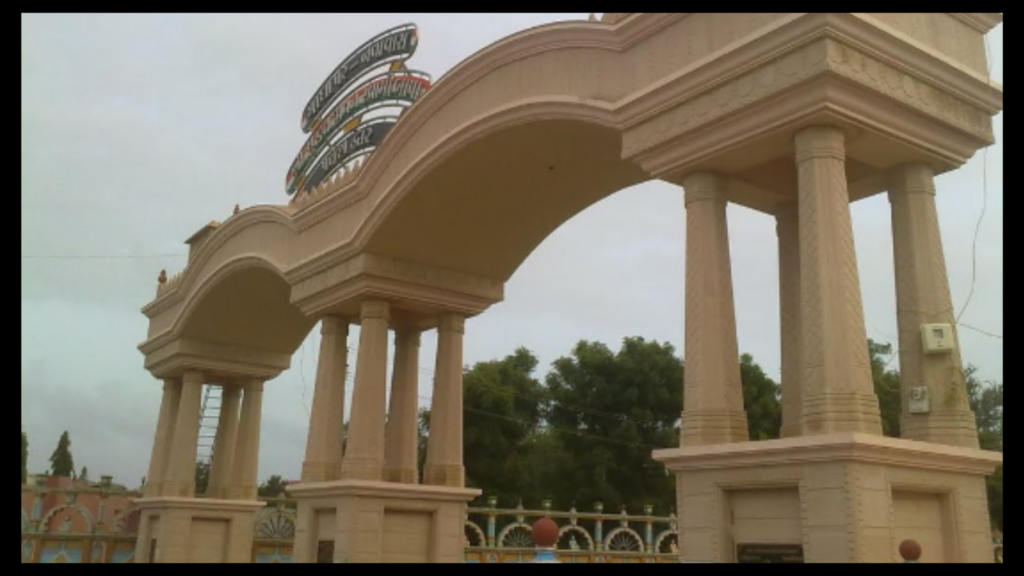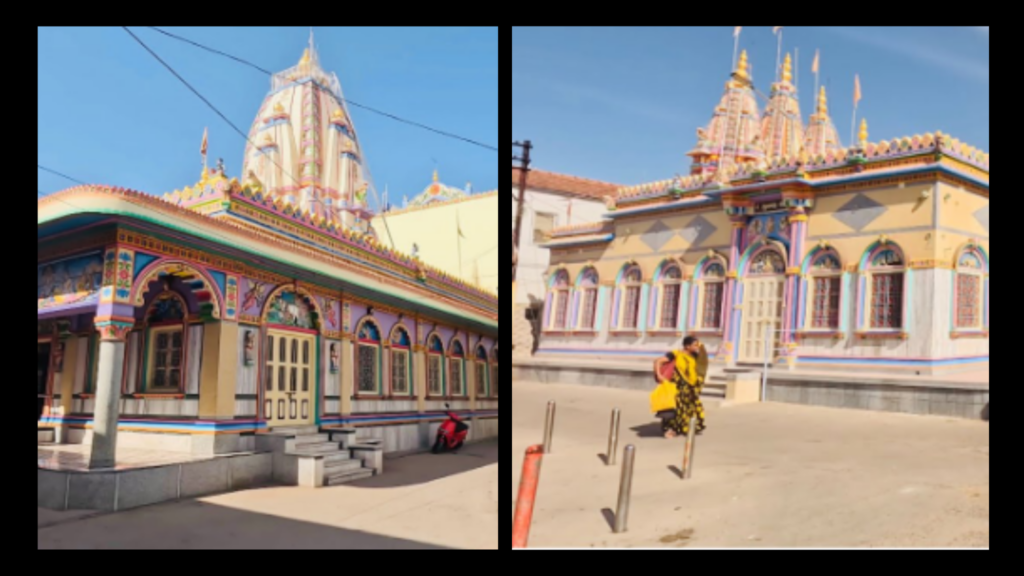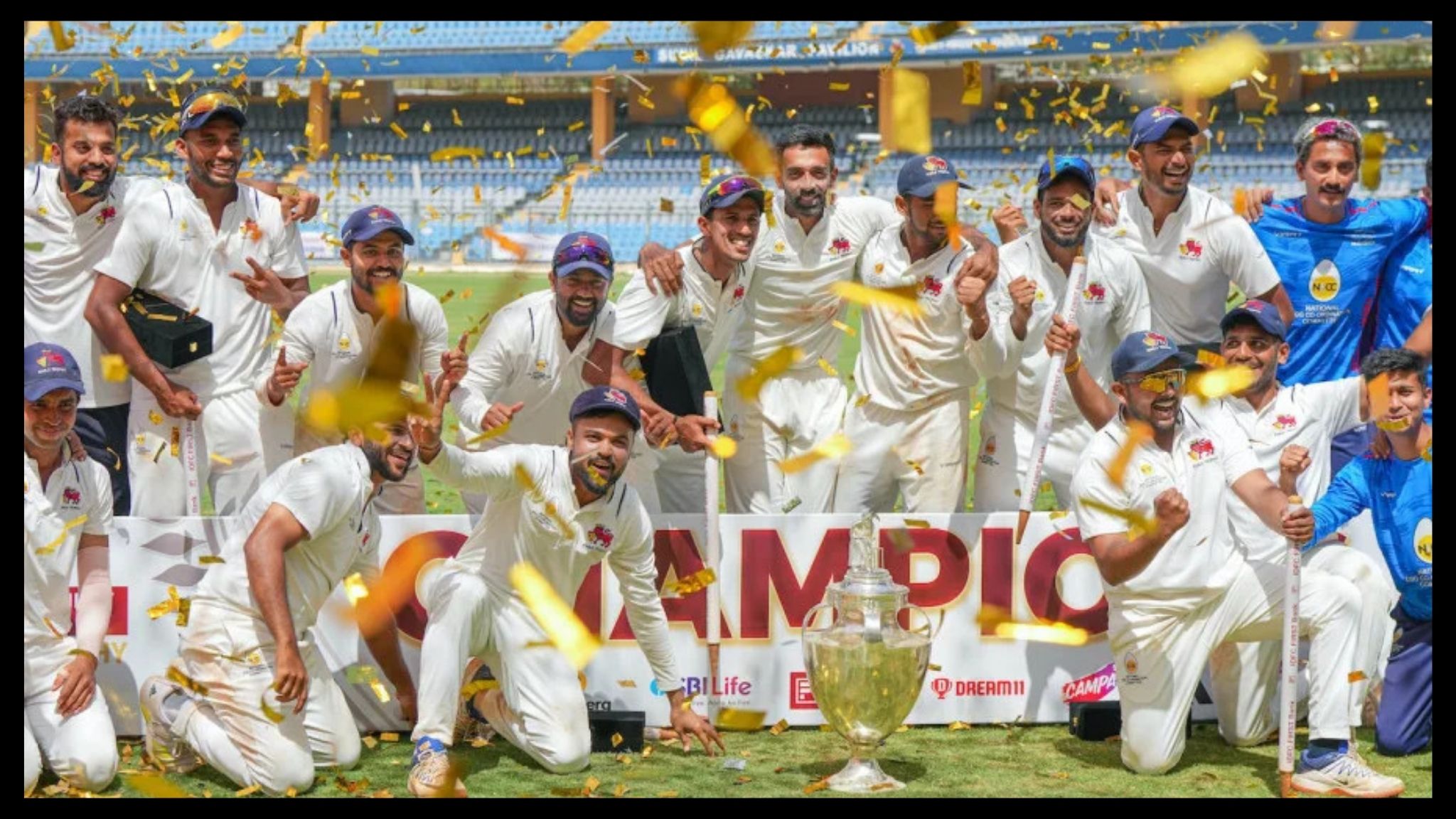Where is Asia’s Richest Village?
Is it really in Gujarat?
A remote desert village with 17 banks and deposits of more than ₹7,000 crore.
Sounds surreal? It’s real.
Welcome to Madhapar, a small village located near Bhuj in the Kutch district of Gujarat. Recently, this quiet village grabbed attention on Instagram, Twitter, and major news portals.
Not for politics or travel, but because of its high savings
Madhapar is being celebrated today as Asia’s wealthiest village. And what’s driving this quiet revolution? Not industries or IT parks, but NRI roots and rural values.

Location & Demographics
Madhapar lies merely 3–4 kilometres from Bhuj, the Kutch district headquarters. It has a population of around 32,000, who are predominantly Patel community members. Madhapar is named in memory of Madha Kanji Solanki, a key figure in the KGK (Mistri) community.
Despite its desert surroundings, Madhapar thrives as a hub of financial discipline and rural prosperity. What makes this village stand out isn’t flashy development but quiet savings and conservative wealth management.
The village has over ₹7,000 crore invested in fixed deposits. That’s ₹22 lakh average per capita, unheard of in most of rural Asia.
Ruda Ladha Chawra, a well-known railway contractor who was born in Madhapar in 1884, was also committed to the discipline and planning of heritage.
Global Roots, Local Impact
Madhapar’s success story is built on the shoulders of its global diaspora. More than 1,200 village families reside in the UK, USA, Africa, and Australia. Although they migrated years ago, these families are still deeply connected with their roots.
They save on a regular basis in village banks, sponsor temples, and donate to local charities. The trust they have in their native institutions is both cultural and emotional.
Institutions such as the Kutch Madhapur Community (UK) stage cultural festivities, youth camps, and sporting tournaments in London. The NRI Association of Kutch (UK) also provides diaspora families with legal, financial, and property guidance.
Another well-known institution, the Madhapar Village Association, London, is accountable for a massive portion of channelling funds to construct schools, village halls, and health centers.
Even local gatherings at Kutch Madhapar Karyalaya, Harrow help strengthen the sense of identity among second- and third-generation NRIs.

The 17-Bank Phenomenon
There is only one bank or maybe two, in every Indian village. But Madhapur has 17 banks, both private and public. SBI, HDFC, ICICI, PNB, and some other branches are fully functional here.
Why 17? Because the residents here have money worth managing. Fixed deposits are not from businessmen alone. Even farmers and housewives save a lot. This high density of banks speaks volumes about the economic literacy of the population.
Bankers report that villagers prefer long-term investments over short-term spending. They avoid debt. They save regularly. It is a village where people believe in compound interest more than consumerism.
Because of the NRI-sponsored ethos and Mistri community culture of planning, even the teenagers here know about mutual funds and FDs.
Infrastructure & Philanthropy
Madhapur wealth isn’t just locked in accounts, but it’s visible everywhere. Clean roads, piped water, solar streetlights, and well-kept temples all stand as proof.
The village has lakes, schools, health centers, and community centers, all constructed largely from donations. They’re not government projects. They’re the results of pooled NRI funding.
Upgrading the infrastructure is proposed by village polls and overseas WhatsApp groups. What’s different now is the lack of wastage and corruption. Money is spent wisely.
There are also well-built sports complexes and youth training centers in the villages. Organizations overseas check the needs of the village from time to time and plan accordingly. For instance, very recently, repairs at schools and sanitation work were sponsored by the Kutch Madhapur Community (UK).

Community & Cultural Cohesion
Madhapar’s success is not coincidental, but it’s based on community values. The Madhapar Village Association in London brings together villagers living overseas. Similarly, the Kutch Madhapar Karyalaya in Harrow helps the community stay united and active. They organize annual meets, fundraising drives, and investment campaigns for the village. They have a shared goal.
Back home, villagers prefer gold, mutual funds, and fixed deposits rather than a luxurious life. Marriages are affordable. Children learn savings from a young age.
A typical household here could have a bungalow but also ₹50 lakh in FDs. Debt is rare. Literacy regarding money comes naturally. The success is not individual. It’s created and maintained collectively.
The Kutch Gurjar Kshatriya (Mistri) community continues to finance local infrastructure projects in terms of labor and expertise.
Key Takeaways & Broader Lessons
Madhapar shows that villages can thrive without forsaking their heritage. Rural India and the world at large have the following key lessons:
- Leverage diaspora relationships: Preserve the emotional and financial links.
- Invest in trust, not transactions: Allow villagers to self-organize.
- Construct people’s infrastructure: Roads, schools, and temples are a must.
- Promote responsible investment: Educate children to save.
- Invest remittances sensibly: Invest money in collective progress.
Madhapar is not only an exception. It is also a road map for self-dependent rural development. Its narrative tells us that wealth without wisdom is short-lived, but wealth with values lasts generations.
Conclusion: A Model Based on Culture
Madhapar is not just Asia’s richest village but also one of the most emotionally rich. It has shown the world how global opportunities can be met with rural ambition. Where billion-rupee bank accounts are shaded by banyan trees. Where discipline beats display, and community comes before consumption.
Can the model be replicated in India? Yes, if one has unity, purpose, and pride in one’s heritage. Madhapar makes us believe in rural potential and reminds us that success never lies in place but in purpose.
Has Madhapar inspired you? Interested in more stories of grassroots success in Gujarat? Follow Gujpreneur, the voice of Gujarat’s entrepreneurs, villages, and change makers.






